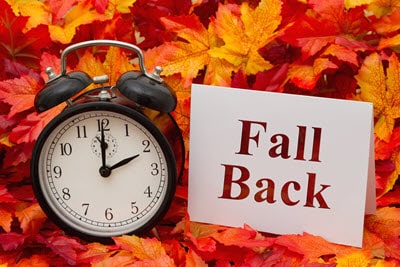How Daylight Savings Time Affects Driving Safety
 Every year on the second Sunday in March, we move our clocks forward by one full hour, giving us more daylight in the evening and less in the early morning. This transition to daylight savings time is designed to save energy and dates back to World War I. While some people resent the lost sleep, others appreciate the extra hour of daylight in the evening. In the fall, on the first Sunday in November, we “fall back” and get back that hour of morning light, but give up after-dinner daylight. Regardless of which time of year you prefer, studies have clearly shown that the start and end of daylight savings time have a definite impact on traffic patterns, including the number of accidents that occur.
Every year on the second Sunday in March, we move our clocks forward by one full hour, giving us more daylight in the evening and less in the early morning. This transition to daylight savings time is designed to save energy and dates back to World War I. While some people resent the lost sleep, others appreciate the extra hour of daylight in the evening. In the fall, on the first Sunday in November, we “fall back” and get back that hour of morning light, but give up after-dinner daylight. Regardless of which time of year you prefer, studies have clearly shown that the start and end of daylight savings time have a definite impact on traffic patterns, including the number of accidents that occur.
Impact of daylight savings on road accidents
How does daylight savings time impact driving and the number of accidents?
- When daylight savings time ends, we lose an hour of afternoon sunlight. This may increase the likelihood of car accidents since more time is spent on the road in the darkness.
- Studies have shown that more people are active during the evening. Without the added sunlight provided by daylight savings time, driver visibility is reduced, increasing the odds of a crash.
- Some experts state that the abrupt time change that accompanies the start and end of daylight savings time, leaves little time for people to adapt. As a result, drivers may still behave as if it’s light outside even when it’s dark. They may drive faster, and, at the same time, pedestrians may be less attentive.
- Daylight savings time may save lives. A 2004 study reported in Accident Analysis and Preventionfound that adding an hour of sunlight in the evening year-round would save approximately 200 people from fatal car crashes every year.
- The benefits of daylight savings time are not always immediately felt. In fact, on the Monday following the start of daylight savings time, the number of accidents tends to increase. A study conducted by the University of British Columbia on U.S. crash data found that the number of traffic accidents rises by 17% on the Monday immediately after daylight savings time kicks in.
- Losing an hour of sleep at the start of daylight savings time results in more drowsy drivers and a corresponding increase in accidents. Martin Moore-Ede, a former professor at Harvard Medical School and an expert on driver fatigue, attributes the increase in accidents associated with daylight savings time to too many sleep-deprived drivers on the road at the same time. Studies have shown that drowsy driving impairs drivers to nearly the same extent as operating under the influence of drugs or alcohol.
Daylight savings time accidents – when to call a lawyer
You should call a lawyer if you are involved in a daylight savings time accident and:
- You or someone else is injured.
- The accident was caused by another driver’s negligence.
- You have suffered significant financial losses, such as medical bills, lost wages, or property damage.
A lawyer can help you understand your legal rights and options, and can represent you in negotiations with the insurance company or in court.
Here are some specific examples of situations where you may want to call a lawyer after a daylight savings time accident:
- The other driver was asleep at the wheel or driving impaired by fatigue.
- The other driver was speeding or otherwise driving recklessly.
- The other driver failed to yield the right of way or otherwise violated traffic laws.
- The accident was caused by a defective road or traffic signal.
- The accident was caused by a defective vehicle or vehicle part.
If you are unsure whether or not you should call a lawyer, it is always best to err on the side of caution and consult with an attorney.
Have you been injured in a Kansas City area car accident?
If you’ve been injured in a car accident you need to speak with an experienced car accident lawyer as soon as possible. Call or contact us today at any of our convenient locations in Kansas City, Blue Springs, Lee’s Summit, Parkville and St. Joseph, Missouri; and in Olathe, Kansas City and Overland Park, Kansas.

